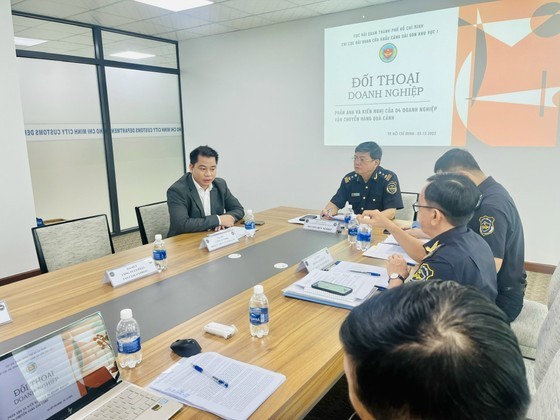
Accordingly, the four transport companies of Gemadept Shipping Co. Ltd., Global Logistics Service Co. Ltd., Tan Cang Waterway Transport JSC., and Newport Cypress JSC. reported that transited cargoes are being checked manually, which means time-consuming and negative impacts to a large quantity of containers.
In addition, when one container is inspected, 30-50 others in the same bill of lading are kept as well until the work is completed (normally from 15-45 days). This tardiness creates unwanted extra costs for businesses while harmfully affecting trading relationships between Vietnam and other countries like Cambodia.
Hoang Long from Global Logistics Service Co. Ltd. said that the required dossiers for transited cargoes are reducing the competitiveness of transport companies. The reason is that such permits as phytosanitary certificates must be obtained from the Plant Protection Department, sited in Hanoi, which takes much time and money. He, therefore, proposed that it is not necessary to declare transited cargoes in as much detailed a way as imported goods, and that proper support should be given to transport businesses.
Nguyen Thanh Long, Deputy Head of the Customs Sub-division in Zone 1 of Saigon Port informed that there was no case of inspecting one container leading to impacts on the other 30-50 like the report of the above business. It might be that the cargo ship has various declaration forms, and a check on 1 container in 1 form affects the whole ship.
In this case, the transport enterprise can separate this container with its corresponding declaration form and proceed with declaring the rest to continue going. The Division can provide support when needed, but the concerned business should work with the port dispatcher first for the possibility of separating the bill of lading.
When detecting law violations, the customs must make a record of the case, determine the value of the shipment, and transfer it to related functional agencies for proper handling. Statistics reveal that the average time to inspect cargoes of the four above transport companies in 2022 is 9.5 days. In addition, the rate of cargoes being inspected (from 10-100 percent) depends on many factors. When violations are found, state officers are allowed to increase this rate (as regulated by the General Department of Vietnam Customs).
As to the long time of 15-45 days for checking goods, the HCMC Customs said that state officials normally notify related businesses immediately when a suspension decision is made, and it usually lasts 2-3 days unless there is a need for additional dossiers. This suspension is counted from the time cargoes are displayed for inspection, not from the suspension time of customs clearance.
The request for detailed declaration of cargoes is a regulation issued by the Finance Ministry, so any related proposals should be sent directly to that Ministry for consideration.
Deputy Head of the HCMC Customs Division Nguyen Huu Nghiep stressed that cargo checking, cargo routing, and inspection rates are all displayed in the Customs management system. While providing smooth clearance procedures, customs officials must also try to stop fraudulent goods from entering the domestic market and creating havoc to the national economy. For instance, the violation rate of transited cargo of the four above transport businesses is from 47-56 percent this November.
“We always appreciate opinions and listen to problem reports of transport enterprises to address them. In the upcoming time, the HCMC Customs Division will hold more sessions like this with cargo transit businesses. We also leave the contact details of state officials in charge of this aspect here for ease of information exchange”, said Mr. Nghiep.
Cargo transit businesses can call this number to talk to Mr. Nguyen Thanh Long, Deputy Head of the Customs Sub-division in Zone 1 of Saigon Port (HCMC Customs Division): 0903620399; or this number of Chief of the Supervision and Control Team Dang Bui Viet: 0983400479.
























